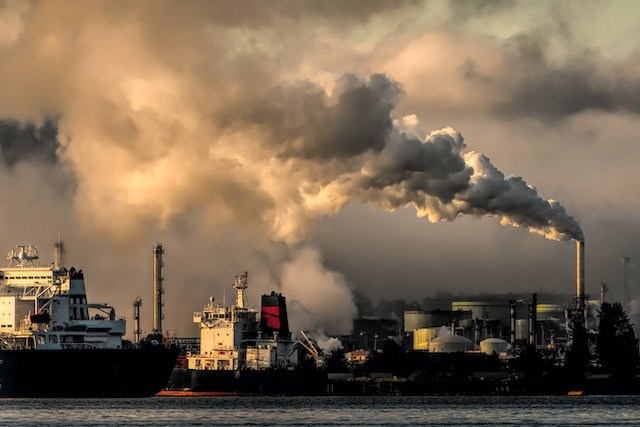The world's current climate pledges are insufficient to keep the 2015 Paris Agreement's goal firmly within reach. The 1.5-degree Celsius limit will almost certainly be exceeded.
According to new research led by scientists at the Department of Energy's Pacific Northwest National Laboratory, the University of Maryland, and the United States, countries can reduce time spent in a warmer world by adopting more ambitious climate pledges and decarbonizing faster.
The Environmental Protection Agency (EPA). They warned that this is the only way to reduce overshoot.
The world will probably warm beyond the 1. 5-degree limit
 (Photo : Chris LeBoutillier/Unsplash)
(Photo : Chris LeBoutillier/Unsplash)

While exceeding the 1.5-degree limit appears to be unavoidable, the researchers chart several possible paths in which the overshoot period is reduced, in some cases by decades, as per ScienceDaily.
The study was published today in the journal Nature Climate Change, in conjunction with the 2022 United Nations Climate Change Conference, also known as COP27, which is being held in Sharm El Sheikh, Egypt.
Every second saved by reducing the overshoot equates to less time spent avoiding the most harmful consequences of global warmings, such as extreme weather and rising sea levels.
More ambitious goals could have "irreversible and adverse consequences for human and natural systems," according to lead author Gokul Iyer, a scientist at the Joint Global Change Research Institute, a collaboration between PNNL and the University of Maryland.
The same research team discovered that the then-updated pledges at COP26 in 2021 could significantly increase the likelihood of limiting warming to 2 degrees Celsius above pre-industrial levels.
The authors go a step further in answering the question of how to move the needle from 2 to 1.5 degrees in their new paper.
The authors simulate scenarios, particularly 27 emissions pathways in total, each with varying degrees of ambition, to determine what degree of warming would likely result from which course of action.
The authors begin with the assumption that countries will meet their emissions pledges and long-term strategies on time.
In more ambitious scenarios, the authors calculate how much warming can be avoided if countries decarbonize faster and move their net-zero pledge dates forward.
Their findings highlight the importance of "ratcheting near-term ambition," which entails immediate and long-term reductions in carbon dioxide emissions from all sectors of the energy system.
Global carbon dioxide levels would not reach net zero this century if countries maintained their nationally determined contributions through 2030 and followed a two percent minimum decarbonization rate, for example.
Taking the most aggressive path, however, could result in net-zero carbon dioxide emissions by 2057.
According to the authors, such a path is characterized by "rapid transformations throughout the global energy system" and the expansion of "low-carbon technologies such as renewables, nuclear energy, and carbon capture and storage."
Also Read: Adapting to Climate Change Could Still Mean Environmental Troubles
Effects of global warming
Almost all land areas are experiencing an increase in hot days and heat waves; 2020 was one of the hottest years on record, as per the UN.
Heat-related illnesses become more common as temperatures rise, making it more difficult to work and move around. When conditions are hotter, wildfires start more easily and spread more quickly.
Temperature changes cause changes in rainfall. As a result, storms become more severe and frequent. Flooding and landslides destroyed homes and communities while costing billions of pounds.
Water is becoming increasingly scarce in many areas. Droughts can cause devastating sand and dust storms, which can transport billions of tons of sand across continents.
Deserts are growing in size, reducing available farmland. Many people are now threatened by a lack of water on a regular basis.
The ocean absorbs the majority of the heat emitted by global warming. This causes ice sheets to melt and sea levels to rise, endangering coastal and island communities.
The ocean also absorbs CO2, keeping it out of the atmosphere. More carbon dioxide causes the ocean to become more acidic, endangering marine life.
Climate change endangers the survival of species on land and in the sea. As the temperature rises, so do the risks.
Among the many threats are forest fires, extreme weather, and invasive pests and diseases. Some species will be able to relocate and thrive, while others will perish.
Climate change and an increase in extreme weather events are among the causes of a global increase in hunger and malnutrition.
Fishery crops and livestock may be destroyed or reduced in productivity. Heat stress can reduce the availability of water and grasslands for grazing.
Malaria is spreading as a result of changing weather patterns. Extreme weather events increase disease and death and make healthcare systems difficult to keep up.
Other health risks include increased hunger and poor nutrition in areas where people cannot grow or find enough food.
Related article: Heatwave Prompted by Climate Change May Cause Shortage of Christmas Tree This Year
© 2024 NatureWorldNews.com All rights reserved. Do not reproduce without permission.


![Climate Change is Reducing Dust Levels Worldwide as Arctic Temperature Warms [Study]](https://1471793142.rsc.cdn77.org/data/thumbs/full/70320/280/157/50/40/climate-change-is-reducing-dust-levels-worldwide-as-arctic-temperature-warms-study.jpg)


